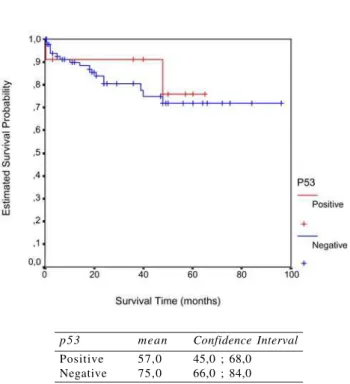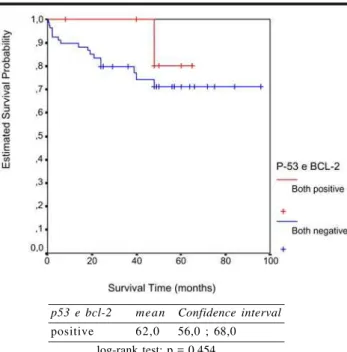Analysis of the correlation between p53 and bcl-2 expression with staging and prognosis of the colorectal adenocarcinoma
Texto
Imagem



Documentos relacionados
The present study analyzed the immunohistochemical expressions of MMP-1, MMP-7 and VEGF in colorectal adenocarcinoma cases and determined the correlations between this group of
PURPOSE : To evaluate the immunohistochemical expression of p16, Ki-67, p53 and Bcl-2 proteins in gastrointestinal stromal tumors (GIST); to assess the possible association
Comparative study between the free DNA in peripheral blood and TNM staging in patients with colorectal cancer for prognostic evaluation in the university hospital of the State
Increased expression of VEGF, p53, Rb and Bcl-2 can affect resistance to chemotherapy.(57) Expression of VEGF is a prognostic indicator in patients with lung cancer, participating
The structure of the remelting zone of the steel C90 steel be- fore conventional tempering consitute cells, dendritic cells, sur- rounded with the cementite, inside of
The correlation between TNM classification and histological scores of malignancy, and the correlation of these parameters with the prognosis was evaluated in 16 cases of squamous
Apoptosis in colorectal carcinoma occurring in patients aged 45 years and under: relantionship to prognosis, mitosis and immunohistochemical demonstration of p53, c-myc and
Objectives - To evaluated p53, cyclin D1 and Bcl-2 immunoexpressions in esophagogastric junction adenocarcinoma patients, without Barrett’s esophagus, and to compared